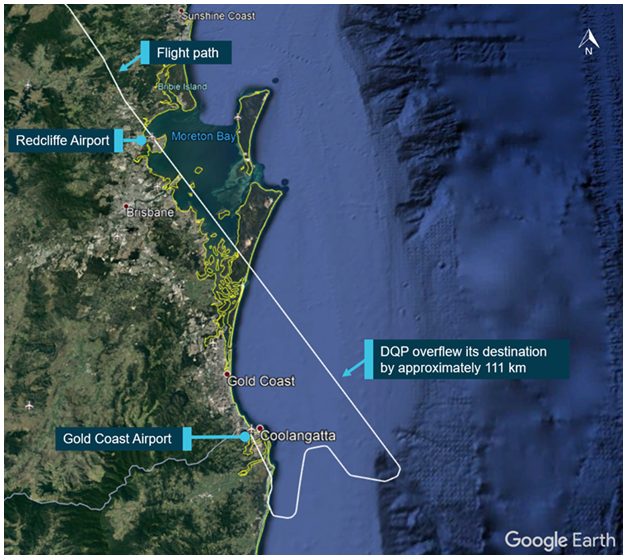The Australian Transport Safety Bureau (ATSB) has reported that in July 2020, a pilot in Australia reportedly fell asleep and remained as such for at least 40 minutes, while in the midst of flying.
The pilot was flying a Cessna 208B Caravan on a repositioning flight from Cairns, Queensland to Redcliffe.
While cruising at 10,000 feet the pilot encountered, “unforecast icing conditions and poor visibility due to cloud.”
The pilot then climbed to 11,000 feet and began using the aircraft’s supplementary oxygen system intermittently, as per the investigation’s report. However, “Pilots are required to continuously use an oxygen supply when flying unpressurized aircraft, such as the Caravan, above 10,000 feet,” the report continued.
When the pilot was about 53 km (approx. 33 mi) away from his destination, air traffic control tried to reach the pilot for directives, but the pilot was unresponsive.
When they continued to get no reply from the Cessna pilot, they asked pilots in nearby aircraft to try to make contact with the Caravan pilot, but to no avail.
Finally, after about 40 minutes without responding to air traffic control, the pilot woke up with the plane, “about 111 km (roughly 69 miles) south-south-east of the intended destination,” per the report.
Communication with ATC was re-established and the pilot was instructed to land at Gold Coast Airport. The plane landed safely, without incident.

PC: ATSB
“The ATSB found that the pilot was likely experiencing a level of fatigue due to inadequate sleep the night before and leading up to the incident,” said the report. “Further, operating at 11,000 ft with intermittent use of supplemental oxygen likely resulted in the pilot experiencing mild hypoxia (Note from Sharon: a condition of not having enough oxygen). This likely exacerbated the pilot’s existing fatigue and contributed to the pilot falling asleep.”
“This incident emphasizes the importance of pilots monitoring their own health and well being, to ensure that they are well-rested and adequately nourished, especially when conducting single pilot operations,” said ATSB Acting Transport Safety Director, Kerri Hughes.
Although the pilot’s fatigue played a role in their falling asleep, Ms. Hughes said the investigation carefully considered the role of hypoxia in the incident.
“Although a common symptom of hypoxia is loss of consciousness, it is not typical for someone experiencing hypoxia to regain consciousness, while still operating at the same altitude and without additional oxygen,” she said.
“Therefore, from the information obtained by a medical specialist engaged by the ATSB and from studies conducted on mild hypoxia at moderate altitudes, the ATSB determined that it was unlikely that the pilot had lost consciousness solely due to mild hypoxia.
“Rather, the pilot had fallen asleep likely due to a combination of fatigue and mild hypoxia, possibly exacerbated by dehydration and diet.”
Humans have a habit of vastly underestimating the dangers of fatigue and overestimating their abilities when fatigued. Add mild hypoxia to that, and it’s not difficult to imagine someone falling asleep, even when they’re doing something as important as flying a plane.
Anyway, click here for the full report.
Feature Photo: Pixabay
Want to comment on this post? Great! Read this first to help ensure it gets approved.
Like this post? Please share it! We have plenty more just like it and would love it if you decided to hang around and get emailed notifications of when we post. Or maybe you’d like to join our Facebook group – we have 22,000+ members and we talk and ask questions about travel (including Disney parks), creative ways to earn frequent flyer miles and hotel points, how to save money on or for your trips, get access to travel articles you may not see otherwise, etc. Whether you’ve read our posts before or this is the first time you’re stopping by, we’re really glad you’re here and hope you come back to visit again!
This post first appeared on Your Mileage May Vary
